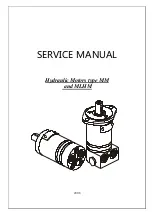
INFORMATION
ABOUT MAINTENANCE
5
41
EN
5.9
Check and setting alternator standard belt tension
Warning
•
For safety precautions see
5.9.1 Check
1.
Check the belt
A
condition, if worn out or
deteriorated, replace it.
2.
Check by the appropriate tool that at point p the
tension value is between
80 and 85 Hz
.
Using the tool
F
(DENSO BTG-2 or a similar one) shown in the
picture, it is possible to check the corresponding value in
Newtons, which should be between
350 and 450 N.
Should the correct tool not be available, the belt tension can
be checked by applying a force in the direction of arrow
G
of
approx' 10kg on the point p. When correctly tensioned the
belt must show a movement of less than 10 mm. If not adjust
it.
5.9.2
Adjustment
1.
Loosen the fastening bolts
B e C
.
2.
Pull the alternator outwards (in direction of the arrow
D
), to tension the belt.
3.
Tension the belt tightening the bolts
B e C
.
4.
Tighten bolts
B
(tightening torque of
25 Nm
) and
C
(tightening torque of
69 Nm
) in sequence with a
torque wrench
E
.
5.
Check by the appropriate tool that at point p the
tension value is between
80 and 85 Hz
.
Using the tool
F
(DENSO BTG-2 or a similar one) shown in the
picture, it is possible to check the corresponding value in
Newtons, which should be between
350 and N.450.
Should the correct tool not be available, the belt tension can
be checked by applying a force in the direction of arrow
G
of
approx' 10kg on the point p. When correctly tensioned the
belt must show a movement of less than 10mm.
Let the engine run for some minutes, then let it cool down at
ambient temperature and repeat the operations
2, 3, 4 and 5
in case the belt tension results out of the above mentioned
values.
NOTE:
Contact
KOHLER
authorised workshops for
replacement.
Fig 5.11
Fig 5.12
Fig 5.13
















































